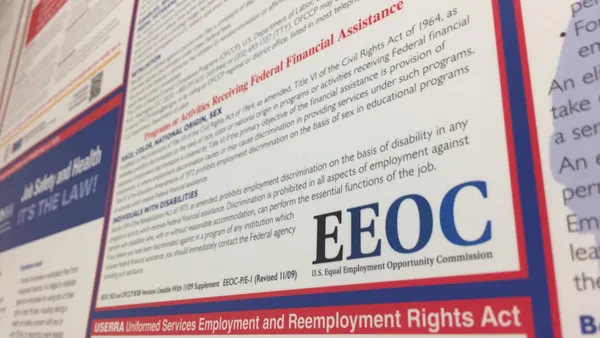Dive Brief:
- The U.S. Department of Labor (DOL) released two pieces of guidance Tuesday that give employers more flexibility in how they treat the intersection of remote practices and compliance with federal employment law.
- Employers may satisfy Fair Labor Standards Act or Family and Medical Leave Act posting obligations by administering an electronic posting if: all employees telework exclusively, customarily receive information electronically and have ready access to electronic postings at all times, DOL said in the first guidance.
- In a second field assistance bulletin, DOL's Wage and Hour Division (WHD) wrote that employees' telemedicine visits can count as qualifying treatment received for a serious health condition under the FMLA. The treatment must be an examination, evaluation or treatment by a healthcare provider; be permitted by state licensing authorities; and should be conducted via video conference, WHD specified.
Dive Insight:
Several federal agencies have worked to grant employers flexibility in their compliance efforts during the pandemic. U.S. Immigration and Customs Enforcement, for example, temporarily waived employers' obligations to review Form I-9 identification documents in person in March.
Before Tuesday's guidance, it was recommended employers do double duty in their posting requirements, taking care to hang notices at worksites — even empty ones — and following up with electronic communications, Fisher Phillips Kevin Troutman previously told HR Dive. When DOL released guidance regarding posting requirements for the Families First Coronavirus Response Act, it required employers to post a notice on workplace premises but stipulated that employers could satisfy the requirement by emailing or mailing or notices to employees, or posting the information online.
The second bulletin also represents a relaxation in light of the pandemic. Telehealth visits skyrocketed in 2020, research showed. By May, virtual care use grew 1.6 times over the previous year, according to Blue Cross Blue Shield Association survey results, and DOL appears to have adapted to that trend.












